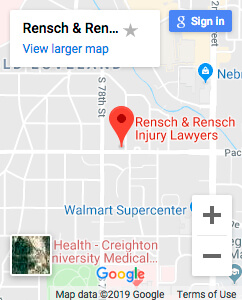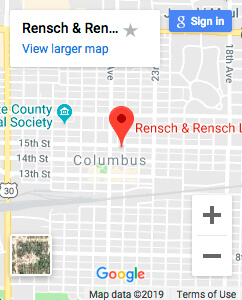Driverless Cars and How They Will Reshape Traffic Accident Law
OMAHA, Nebraska. In moral philosophy, there is a famous “problem” that has been enjoying some newfound publicity thanks to driverless cars. It’s known as the trolley problem. Imagine you see a trolley about to hit a group of people. You are sitting near a switch that could turn the trolley to another track. The problem? If you switch the trolley to another track, it will hit one person. What do you do? Different people have diverse moral intuitions about what they would do.
According to Wired, some driverless car experts believe that comparing driverless cars to the trolley in the scenario is unnecessary. Yet, driverless cars raise serious legal and moral implications that designers and programmers will have to answer. Should a driverless car put the safety of its own passengers over and above the safety of others on the road? Should a driverless car preserve the greatest number of lives in all cases, even if that means endangering the lives of its own passengers?
The trolley problem could very well play out in city driving, where a driverless car may need to swerve onto oncoming traffic in order to avoid hitting a group of pedestrians.
In tort law, juries are instructed to use the “calculus of negligence” when determining whether a person owes a duty to a victim following an accident. According to Yale Law, a party could be held negligent if the cost of preventing an injury would have been lower than the cost of damages caused by an accident. Of course, the accident must have been foreseeable by the negligent party. Whether a person could have reasonably foreseen an accident is often left for judges and juries to decide.
According to one eminent researcher, neither ethicists, nor philosophers, nor academics will resolve the trolley problem as it pertains to driverless cars. Instead, lawyers and lawmakers will have to soon make decisions about what cases against self-driving cars they will pursue. Juries and judges may soon have to make decisions about when to hold companies that design driverless cars accountable for deaths and injuries.
At the end of the day, personal injury law may be the arena where the trolley problem is ultimately solved. However, when it comes to driverless car design, some of the tough decisions have to be programmed into the cars themselves. The general public already has expressed some concern about driving a car that wouldn’t put their own families or lives first, while also expressing the contradictory wish that driverless cars protect and save the greatest number of lives. Unfortunately, programmers can’t always do both.
Rensch & Rensch Law are personal injury lawyers in Omaha, Nebraska who see a future where cars may be safer, but understands that questions about tort law may need to be seriously answered. After all, most personal injuries in cars are the result of driver error. However, when driver error is eliminated, who then will be at fault when crashes still occur? Machines are not always flawless. Rensch & Rensch Law are watching the legal implications of new technology closely.



